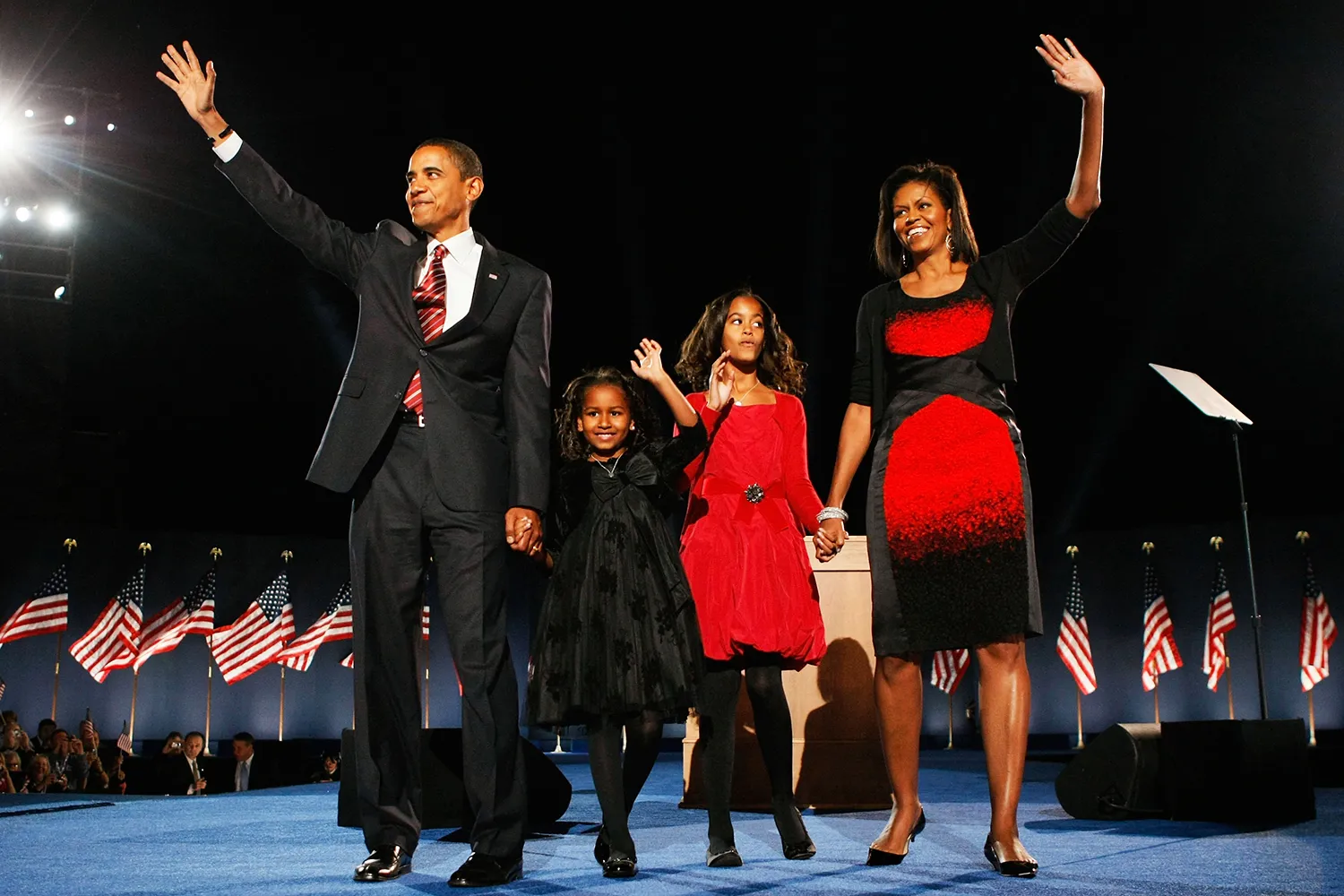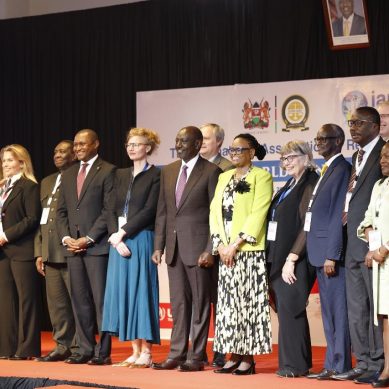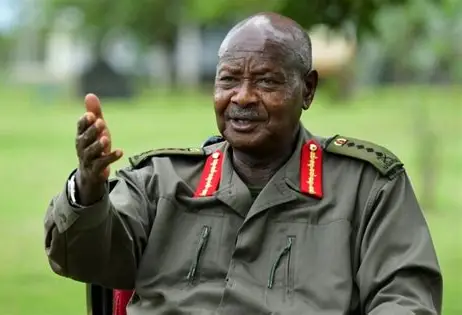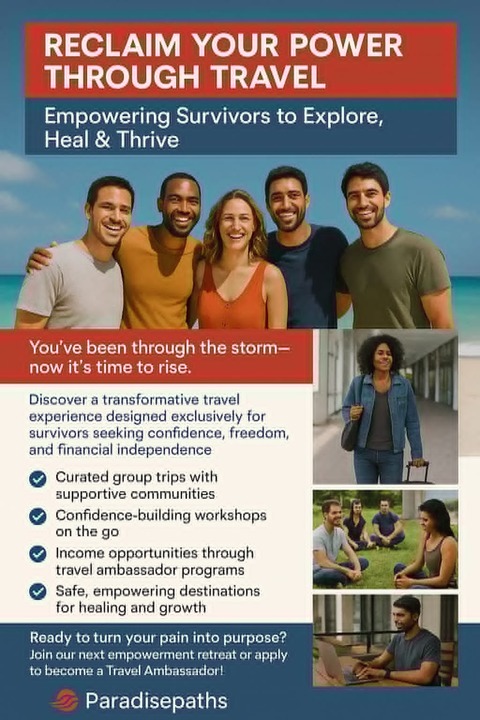
Michelle Obama is gearing up for the release of her new book, The Look, by opening up about her iconic fashion as first lady. While Obama says she “didn’t pay attention” to criticism of her fashion as first lady, she calls out the “pure hypocrisy” she faced.
It’s like a scene from one of her past Let’s Move! campaign events: Michelle Obama is working it outside Washington DC – fingers snapping, hips swaying, a couple carefree twirls. Only on this afternoon the former first lady isn’t surrounded by a cohort of cute kids, fans, news cameras and critics. No, that ship has long sailed, and she’s at peace not being on it.
Instead, at her People photo shoot, she’s draped in a colourful Jason Wu top and moving entirely to the beat of her own drum (and the uncensored sounds of GloRilla, Beyoncé and Cardi B pumping through the speakers).
“Fundamentally, I’m the same person,” Mrs Obama, who these days prefers just Michelle, tells People in this week’s issue, on stands Friday. “But with each decade, I’ve grown wiser. I think I’ve become more confident about who I am. This version of Michelle probably cares less about what other people think.”
Her journey in the global public eye is at the centre of her new coffee table book, The Look (out November 4). The title, co-written with her long-time stylist Meredith Koop, chronicles how the wife of the first Black president of the United States meticulously dressed for the job – and all the celebration and relentless scrutiny that came with that.
“I purposefully did not talk about fashion and beauty during the eight years in the White House,” she says. “I was afraid it was going to take over everything.”
But now at 61 – nearly a decade into life after husband Barack Obama, 64, left office, and more than a few years into being an empty nester, since daughters Malia, 27, and Sasha, 24, flew the coop – “it was time to talk about that journey,” she says.
Below, Michelle 2.0, a hit podcaster and avid tennis player who’s often rocking a crisp set of braids, effuses about her style, impact and happy home life. “This is the first time,” she says, “where every decision that I make is for me.”
People: Let’s start with little Michelle Robinson from the South Side of Chicago. Where did she get her first sense of beauty and style?
Michelle Obama: Soul Train. That was Saturday morning viewing in the Robinson household. As a little girl, I would just marvel not only at the moves and being able to see your favourite artists, but the way the women dressed – just the colour, the style, the flare. I thought, “That’s what cool is.”
People: You write about your early journey to self-confidence. How did you learn to drown out the noise and love yourself?
Michelle Obama: Look, being a tall girl – I’m 5’11” – and my father [Fraser Robinson] was very clear about standing straight and owning my height. It was like, “You do not slouch. You are tall, you are beautiful.” I think it started there. I’m still working on, every day, waking up, looking in the mirror and telling myself that I am smart and beautiful, and kind and worthy. I don’t think that work ever stops for women, particularly women of colour, because sometimes you don’t always hear it back. Women today, we’re facing a time now, where people with power are trying to quiet the voices of people they disagree with. And I think now more than ever, it’s a time when we have to fight to remind ourselves that we matter, that we count.
People: You met Barack when you were a high-powered attorney. What was your go-to look back then?
Michelle Obama: I am certain that it was some kind of 1980s power suit. You had to show up at your corporate law firm in a uniform: a very, very shouldered suit, some kind of feminine-ish blouse, pantyhose, which I hated. Now that I mention it, I don’t know what he saw. [Laughs] I’m like, that doesn’t sound very sexy. It was the 1980s.
People: When you entered the White House, there was still that sense of needing a uniform, but with more pressure. How did you handle that?
I just understood the assignment. It was a complicated assignment. The role of first lady is a kind of job, non-job. You know that you’re supposed to be inspirational, yet accessible. You should be uniquely yourself, authentic, but representational at the same time. And as a Black woman, I felt that I had to make sure that people could see my feminine side.
Especially early on in the campaign, when I was being attacked as being angry, a shrew, demeaning my husband – all these labels were coming in on me that were essentially trying to rob me of that femininity. I understood that, going into it. And I didn’t feel like it was a struggle to do it, because number one, I respected the position. I took the role as first lady very seriously. I was a famous person but I wasn’t a starlet. And so that meant that the clothes could never speak louder than anything I had to say.
People: Even still, your style choices had a major impact. Stuff would sell out in minutes. How did that feel?
Michelle Obama: I didn’t pay attention to it. I didn’t want to go down that rabbit hole of listening to other people’s comments about my physical self, whether good or bad. But I liked the fact that, in hindsight, people identified with what I was wearing. Because if I wore something and it could sell out, that meant that most women could afford to buy it. And I thought that’s a good thing. I wanted the people of America, all people of all races, of all political persuasions, to be able to connect with me.
People: What about times when criticism, like that of your bare arms, got through to you?
Michelle Obama: I took it for what it was, pure hypocrisy. I could pull up pictures of Jackie O in a second and see this fashion icon in sleeveless dresses as first lady. So at that point you’re like, “Oh, this is politics. If you can’t beat them, make everybody scared of them.” That was the motto. If it wasn’t the clothes, it was “that terrorist fist bump.” It was every word that we said. It was my husband’s tan suit.
People: Take us back to 2014 when that tan suit was deemed “un-presidential.”
Michelle Obama: I loved that tan suit! When he had it on, I was like, “Oh, my God, you look so cute.” [Then] I was like, “Oh you got clocked for that one. Welcome to my world.” That was towards the end of his presidency, so we were used to all the crazy issues that people would take with us.
People: There were good times, too. You write about how you used to treat state dinners like date night.
Michelle Obama: For those black tie events, that was like our wedding every time. You felt like the belle of the ball. With each year I got a little riskier, my team and I tried different things. And you’re getting all dolled up for your man. There was an unspoken ritual, he never knew, until I walked out, ready, what I was wearing. That’s the romance, those little moments in this crazy world, where we could look at each other and go, “You’re cute.” Then we walk downstairs to a barrage of press, lights and cameras, and its like, “Just stay in this moment. It’s really just us. This is nice.”
People: What does date night look like now?
Michelle Obama: We’ve been married 32, 33 [years]…I always forget. Sorry, honey. When we’re both happy about date night, we’re at home. We are not getting dressed. We just have a nice dinner, candles lit, music, we talk. We don’t talk for the whole day, because we’re in the house together all day, right? We work from home. So when we are going to have a really special night, it’s like, “Don’t talk to me. Save it for dinner.” He’ll be like, “Did you talk to the girls?” “I did, but we’re not going to talk about it until date night.” But sometimes we go out for dinners in D.C. or wherever. I am too old, I can’t do dinner and a movie. I will fall asleep in the movie. So it’s like, “Let’s pick one.”
People: You mention your daughters. Back in the White House, how did you shape their image while giving them autonomy?
Michelle Obama: So we had a deal. “You work with [my stylist] Meredith [Koop] when dressing for public events.” What’s “in” for a 13-year-old is not acceptable walking down the staircase of Air Force One. It was like, “When you’re with us, you’re like me, you’re on a job. And so your choices can’t lead, but you can be a part of the process.” Meredith worked with them and she had those [fashion] fights. But in their own world it was all them. Barack would be like, “Those shorts seem really short.” And I was like, “Don’t say anything. Let them cook.”
People: Similarly, you’re exploring your own style more these days, and you’re loving braids.
Michelle Obama: It’s freedom. Braids allow me to get them done, and then that’s one less thing that I have to think about. When I’m out of the public eye, I am swimming, I am playing tennis and braids represent that kind of freedom for me. [In the White House] I wasn’t sure whether the country was ready for it. The Crown Act [which protects employees and students from race-based hair discrimination] hadn’t been passed yet, and just like fashion, I didn’t want my hair to become a distraction. But I understood the significance of wearing braids to our portrait unveiling. I wanted to send a message, add to the discourse of Black women in places of power, saying, “This, too, is an appropriate and beautiful way to wear your hair.”
People: Lastly, how’s life in your 60s, inside and out?
Michelle Obama: I’m not wincing at my gray hairs, but I am colouring them! My mother [Marian Robinson] was the same way. She dyed her hair until the day she died. I don’t really do much else. Fortunately, black don’t crack. But my health has always been paramount: what I eat, working out, regular doctors’ visits, all the things that allow me to enjoy this time. I’m as vibrant as I’ve ever been. My kids are grown and launched. We are the former president and first lady, and so I feel like this is the first time in my life that when I say and do something, here in this interview, writing this book, these are my choices. My husband is doing just fine. That is freeing.
- A Tell Media report / Adopted from People








